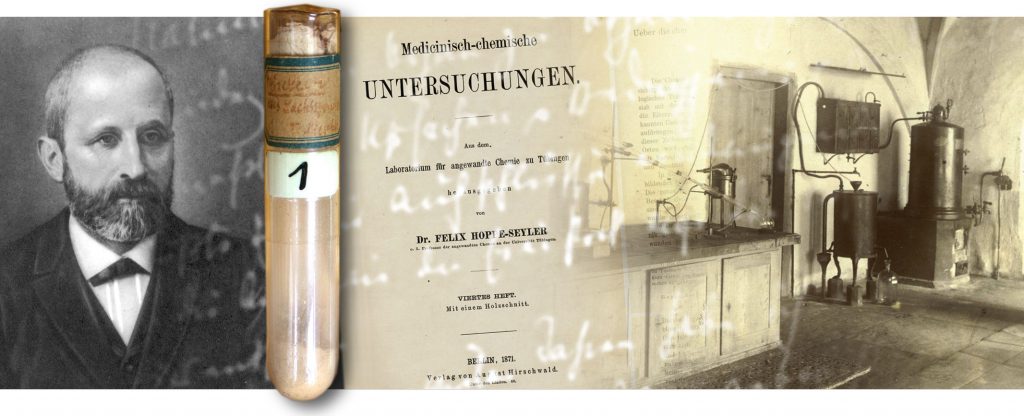Discovering DNA
DNA is arguably the most important molecule we know. In all form of life – bacteria, fungi, plants and animals – it stores the hereditary information. No other molecule has gripped the imagination of the general public as much as DNA has. It has become the icon of the modern Life Sciences and the men who in 1953 uncovered its double-helix structure, Jim Watson and Francis Crick, are among the most famous of scientists. Yet few people have heard of Johann Friedrich Miescher, the man who discovered DNA. And few know the story of how he discovered the “molecule of life”.

Montage showing (from left to right) Friedrich Miescher, Tübingen castle, a vial containing DNA isolated by Miescher, his original publication describing his discovery of DNA and his laboratory in Tübingen castle. Montage by Johannes-Maria Schlorke.
And yet the story itself is fascinating. Miescher was working in the former kitchen of a medieval castle in the city of Tübingen in south-west Germany, using only the most primitive equipment. He extracted the DNA from pus on surgical bandages he obtained from a nearby hospital. During his experiments he had to work with the windows of his lab wide open to the cold German winter to prevent the degradation of his samples. When he had finally managed to characterize the new molecule and was keen to publish his discovery, the publication was delayed due to the Franco-Prussian war and the reluctance of his mentor to believe Miescher’s unusual findings. But ultimately he succeeded and his paper was published in 1871.
To find out more about the discovery of DNA, please see the following references:
- Dahm, R: The discovery of DNA, circa 1869. The Scientist (2008), Vol. 22, Issue 12, p. 84.
- Dahm, R: The First Discovery of DNA. American Scientist (2008), Vol. 96, July-August issue, p. 320-327.
- Dahm R (2008): Discovering DNA: Friedrich Miescher and the early years of nucleic acid research. Human Genetics, Vol. 122(6), p. 565-581.
- Dahm R (2005): Friedrich Miescher and the discovery of DNA. Developmental Biology, Vol. 278(2), p. 274-288.
For more information on the history of science click here.